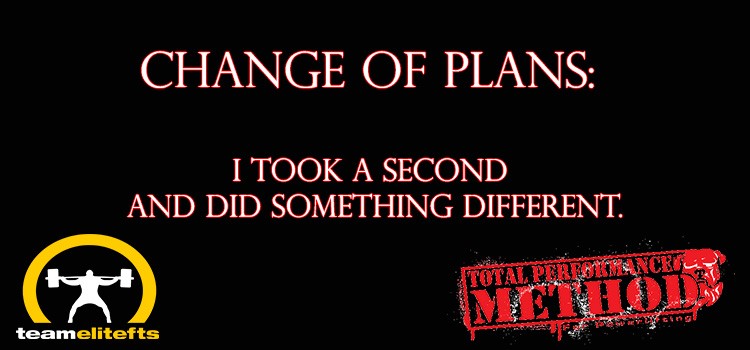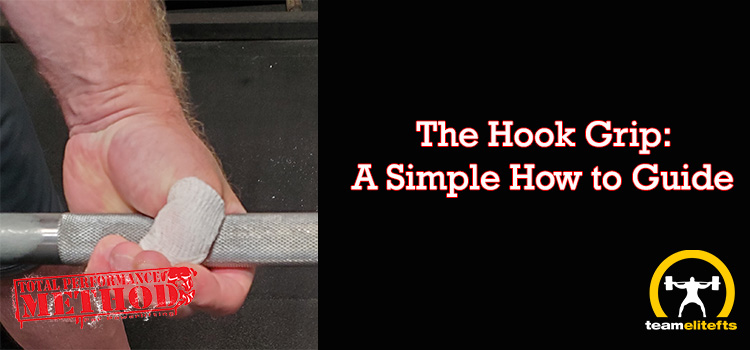
Last week one of my online clients asked a question on the TPSMethod.com Forum about how to get started using the Hook Grip. I figured this is a good Coach Log as I have been asked this question about 1000 times, so here you go.
Let’s look at different types of grips we can use when pulling a barbell:
Double Overhand
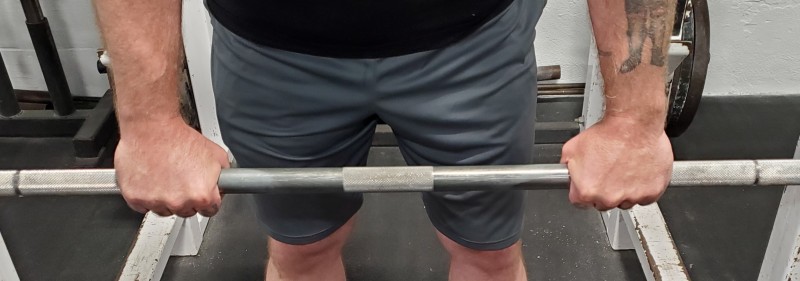
Mixed

Hook
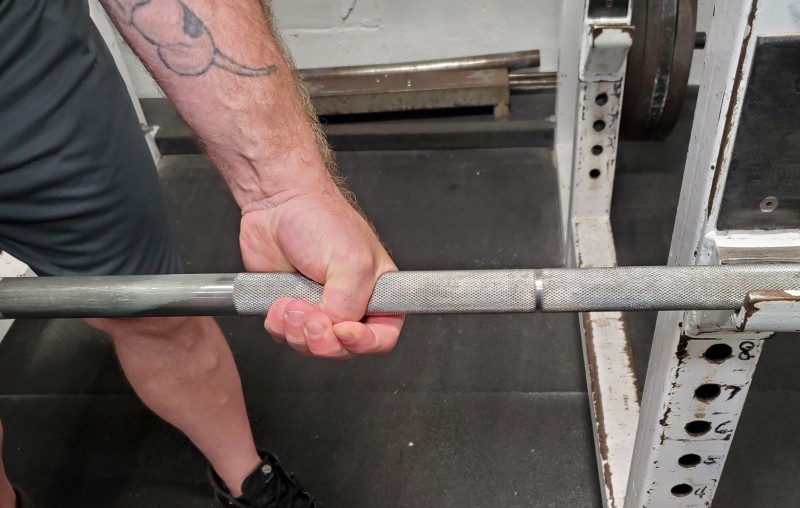
Now look at the benefits and drawbacks of each:
Double Overhand:
Pro’s:
Easy to do and easy to learn
Builds huge(er) grip strength
Con’s:
Weakest of the three types
Mixed:
Pro’s:
Very strong and secure grip
Easy to do and teach
Con’s:
Risk of bicep tear on the “up” hand with poor technique
Some say increased shear on lumbar due to mild twist associated with it
Hook:
Pro’s:
Strongest of all three
Con’s:
Painful
Takes time to develop
Not great for tiny hands. Even so, Dave Kirschen has the hands of an infant, and he has a pretty good hook grip.
While I listed more cons on the Hook Grip than the others, that doesn’t make it bad. It is simply a higher skill variation of gripping a barbell that takes time to perfect.
So what is it that makes the hook grip the strongest of all three?
It’s pretty simple.
If you are hooking right, you turn your thumb into a hook that your fingers wrap around thereby locking the entire grip into place.
It becomes almost impenetrable if you do it right.
It also is pretty painful and many bail on the hook grip before they give it a chance.
With that out of the way, here is a Simple How to Guide on the Hook Grip.
The key to a good hook is to get your hand as deep into the bar as possible.
Jam the webbing of your thumb into the bar as deep as possible.
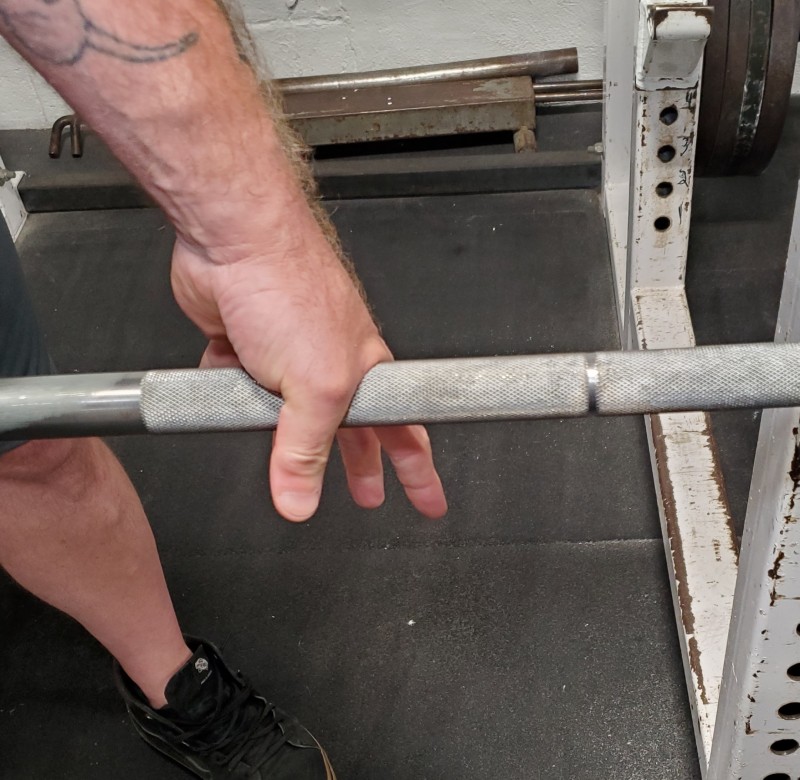
Next, push your thumb towards your pinky.
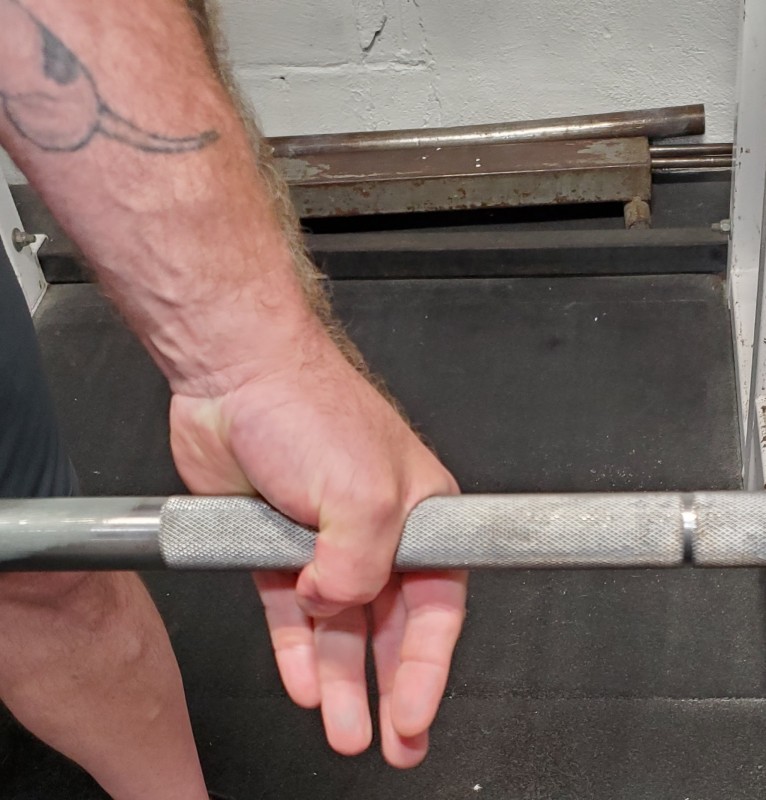
And finally, wrap as many of your fingers around your thumb as you can. You need to get three fingers on the thumb for best results.
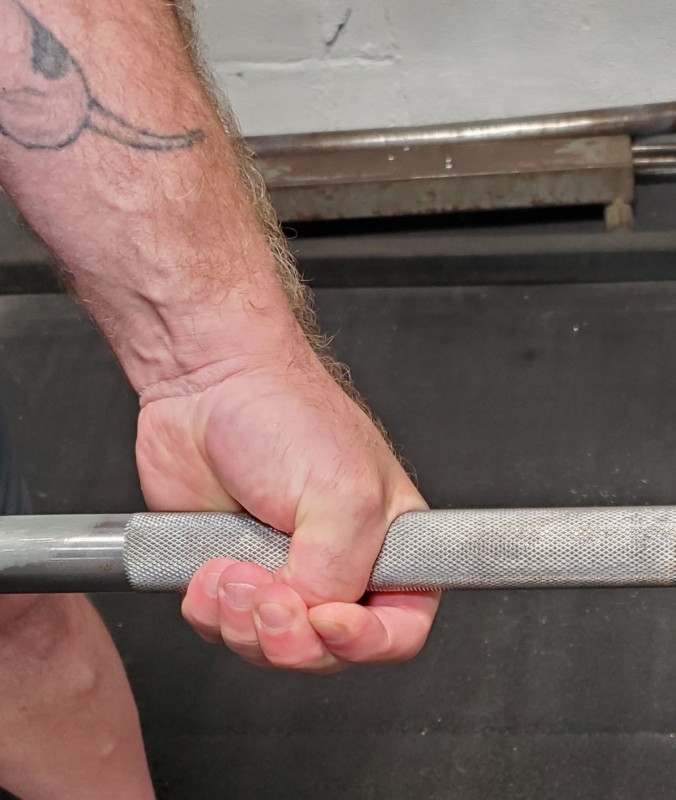
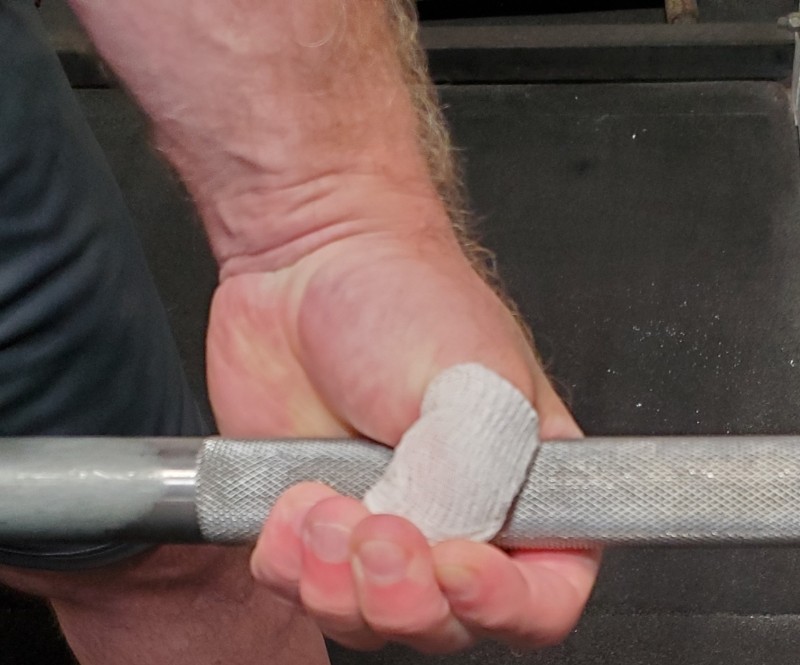
The picture with tape on my thumb shows the three finger technique better. The tape provides a good contrast.
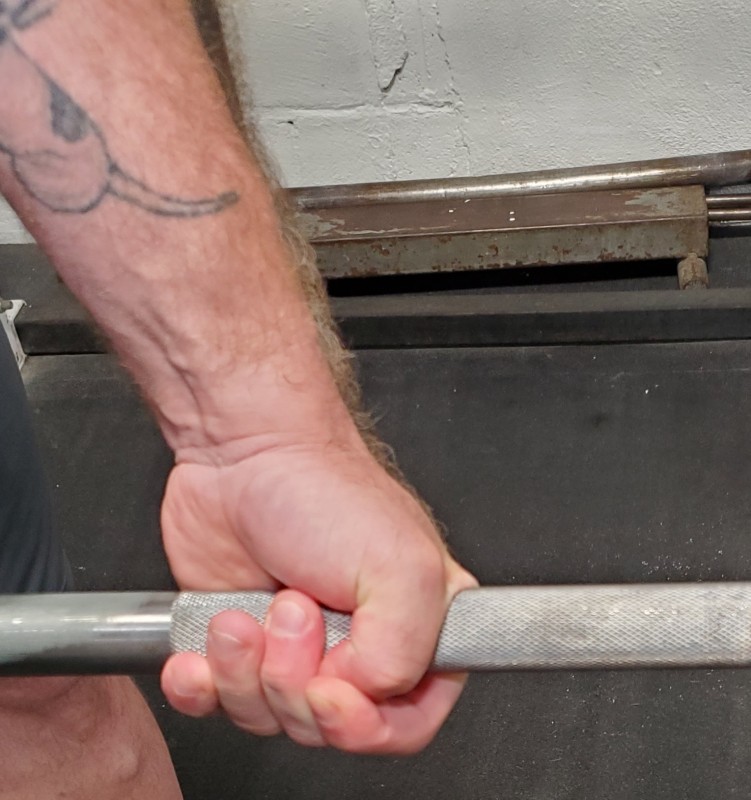
Don't do this or you'll drop the bar! Get your thumb on as many fingers as you can.
As I said before, the hook grip can be painful to start out, and even as you get used to it.
Wrapping your thumb and nail with some stretchy athletic tape will allow you to get a good grip and will take the bite of the knurling out a little.
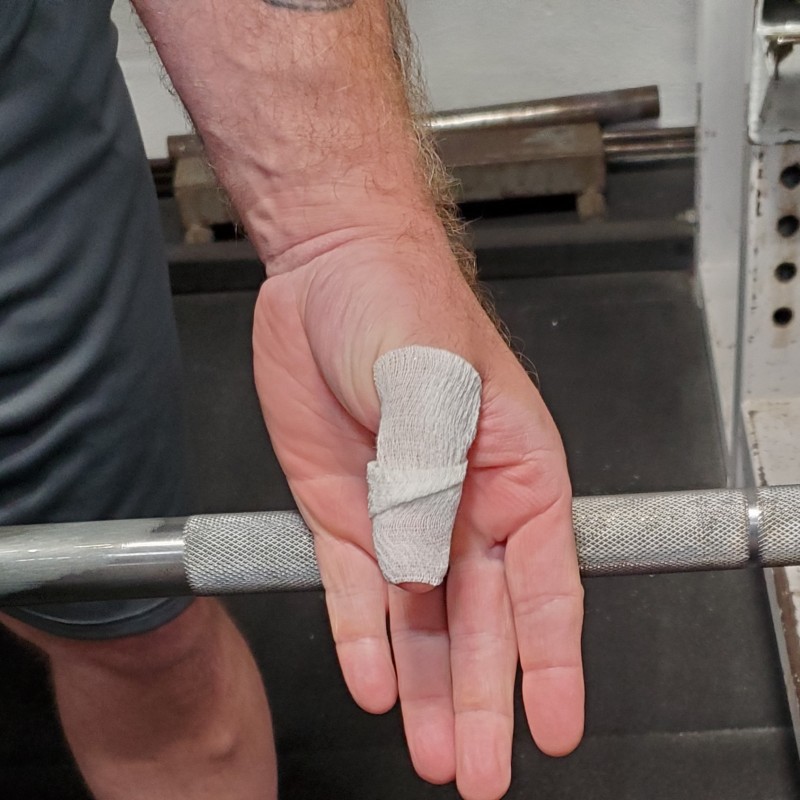
Additionally chalk will stick to the tape well. Use a lot of chalk!
Put it in the webbing of your hands, on your fingers, and on all of the thumb and nail. It’s a lift saver.
How to implement the Hook Grip for Newbies:
It doesn’t matter if you pull conventional, sumo or are an Olympic Weightlifter, the hook grip will give you the strongest grip possible if you put the effort into it.
As I may have mentioned, it’s painful, so I always suggest starting with learning the Hook Grip on a second or third exercise.
Why?
Most people will lift less the first few times because they aren’t used to it and it HURTS. Therefore, your main lift may suffer if you use it there in the learning process.
A lot of time people bail on heavier weights because the heavier it gets the more uncomfortable it becomes.
This goes away in time. You’ll hardly notice it in a few months.
So……
Hit your main lift and then introduce the Hook Grip on a secondary exercise with lighter weights (or a third).
Here’s and example:
1st exercise: Max Effort deadlift
2nd Exercise: Good Mornings
3rd Exercise: RDL’s: add the hook grip in here for the lighter sets as you warm up. If it is too painful to get work sets in, switch grips.
You can also use it on rows, shrugs, pulldowns, snatch grip deadlifts or pretty much anywhere you want to add it in as you develop your skills and pain tolerance to it.
Of course there is always the school of thought that you just do it and suck it up.
You could, but I would rather see you develop a new technique under sub maximal weights. You’ll learn it better.
Increase the amount of work you do each week until you are handling some decent weight and then start doing it on your main lift. It might be a few sessions for some and for others more.
I switched to Hook Grip exclusively for about 6 months a few years ago when I tore a bicep. Using the Hook Grip allowed my bicep to heal and still do reps at 495. (Note: I switched back to mixed once it was healed).
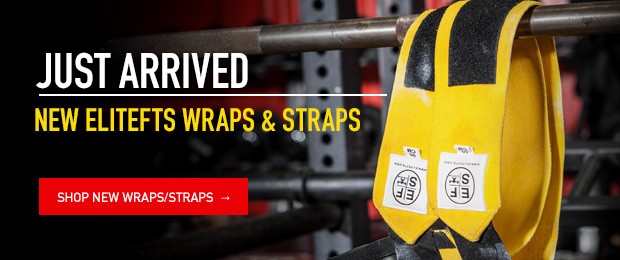
Why did I tell you this?
It’s a side benefit of the Hook Grip. Less stress on the biceps versus Mixed Grip means that you can use it in many rehab situations to keep pulling.
Give the Hook Grip a shot if you are interested. Implement it in to your training slowly and steadily.
In a few weeks to a few months it will feel natural and you’ll be tugging away at weights you used to need straps for.
Did you miss last week’s log?
Oh, yeah, follow us on Instagram too.
@TPSMalden
@tpsmethod
DM ME QUESTIONS THERE TOO!
You might be featured in a Coaching Log
And @tpsmethod
SHARE THIS!
#bostonsstrongest
Vincere vel mori
C.J. Murphy
June 25, 2020










